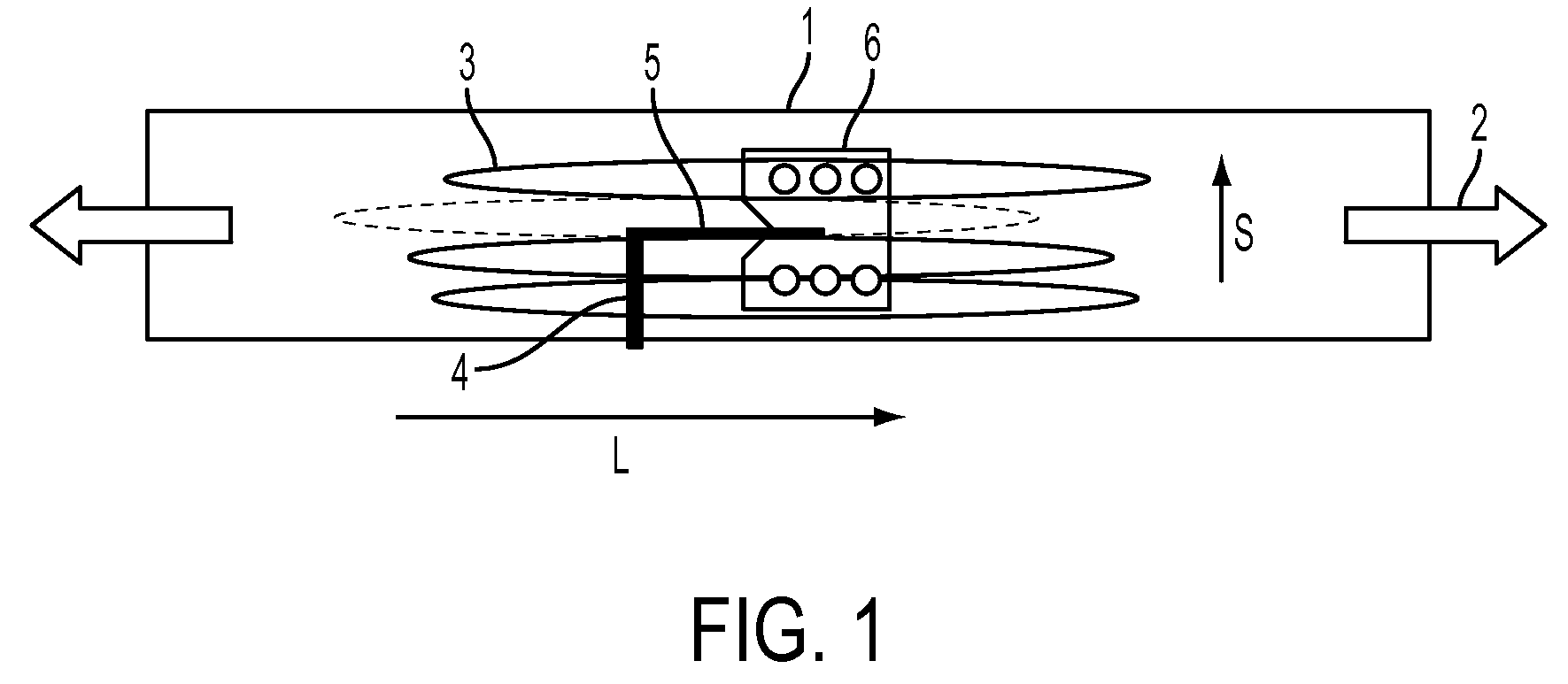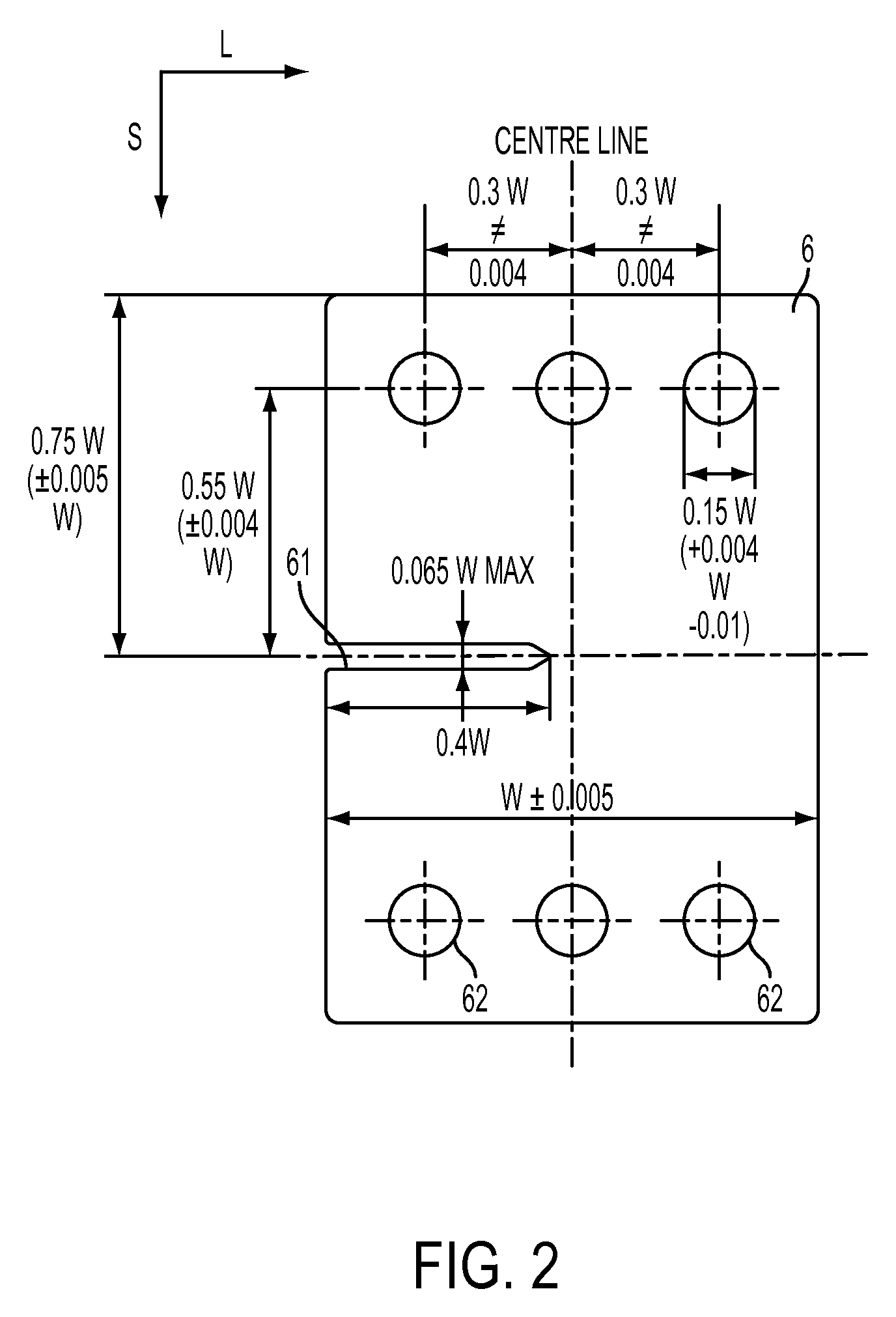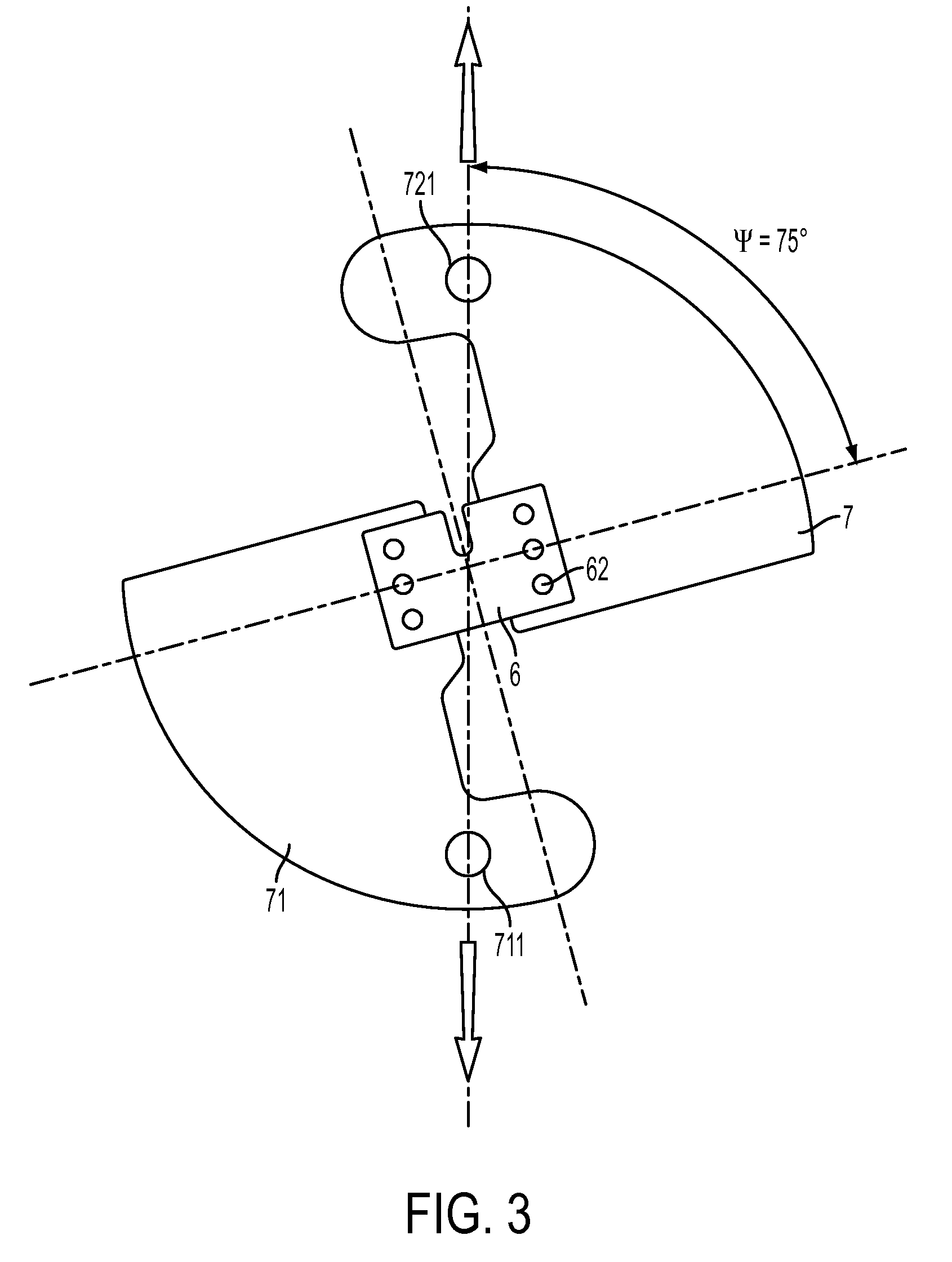Al-Li Rolled Product for Aerospace Applications
a technology of aerospace applications and rolled products, applied in heat treatment equipment, manufacturing tools, heat treatment process control, etc., can solve the problems of high young modulus, high corrosion resistance, high compression resistance, etc., and achieve low propensity to crack branching, high strength, and high toughness
- Summary
- Abstract
- Description
- Claims
- Application Information
AI Technical Summary
Benefits of technology
Problems solved by technology
Method used
Image
Examples
example 1
[0057]Two AA2050 ingots, reference A and B were cast. Their composition is provided in Table 1. For comparison purposes, a AA7050 plate in the T7451 temper was also tested for crack branching. The composition is also provided in Table 1.
TABLE 1Composition (weight %) the different ingots.SiFeCuMnMgTiZrLiAgZnA0.030.043.460.390.40.020.100.880.390.02B0.040.053.600.390.40.020.090.910.370.0270500.040.092.110.012.220.020.11——6.18
[0058]Ingot A was homogenized 12 hours at 505° C. (heating rate: 15° C. / h, equivalent time at 500° C.: 16.7 h), according to the invention. Ingot B (reference) was homogenized 8 hours at 500° C. followed by 36 hours at 530° C. (heating rate: 15° C. / h, equivalent time at 500° C.: 140 h). Ingot A was hot rolled to a 60 mm thick plate and the hot rolling exit temperature was 466° C., the resulting plate was solution heat treated for 2 h at 504° C. (heating rate: 50° C. / h, equivalent time at 500° C.: 2.9 h) and cold water quenched. Ingot B was hot rolled to a 65 mm thi...
example 2
[0061]Two AA2050 ingots, referenced A′ and B and two AA2195 ingots referenced D and E were cast. Their composition is provided in Table 5.
TABLE 5Composition (wt. %) of the different ingotsSiFeCuMnMgTiZrLiAgZnA′0.030.043.460.390.40.020.100.880.390.02C0.020.053.560.410.350.030.090.930.370.02D0.030.044.2—0.40.020.111.060.350.02E0.030.064.30.3 0.40.020.121.170.350.01
[0062]Ingot A′ was homogenized 12 hours at 505° C. (heating rate: 15° C. / h, equivalent time at 500° C.: 16.7 h), according to the invention. Ingot C (reference) was homogenized 8 hours at 500° C. followed by 36 hours at 530° C. (heating rate: 15° C. / h, equivalent time at 500° C.: 140 h). Ingot A′ was hot rolled to a 30 mm thick plate and the hot rolling exit temperature was 466° C., the resulting plate was solution heat treated for 2 h at 505° C. (heating rate: 50° C. / h, equivalent time at 500° C.: 3.0 h) and cold water quenched. Ingot C was hot rolled to a 30 mm thick plate and the hot rolling exit temperature was 474° C., ...
PUM
| Property | Measurement | Unit |
|---|---|---|
| thickness | aaaaa | aaaaa |
| temperature | aaaaa | aaaaa |
| temperature | aaaaa | aaaaa |
Abstract
Description
Claims
Application Information
 Login to View More
Login to View More - R&D
- Intellectual Property
- Life Sciences
- Materials
- Tech Scout
- Unparalleled Data Quality
- Higher Quality Content
- 60% Fewer Hallucinations
Browse by: Latest US Patents, China's latest patents, Technical Efficacy Thesaurus, Application Domain, Technology Topic, Popular Technical Reports.
© 2025 PatSnap. All rights reserved.Legal|Privacy policy|Modern Slavery Act Transparency Statement|Sitemap|About US| Contact US: help@patsnap.com



